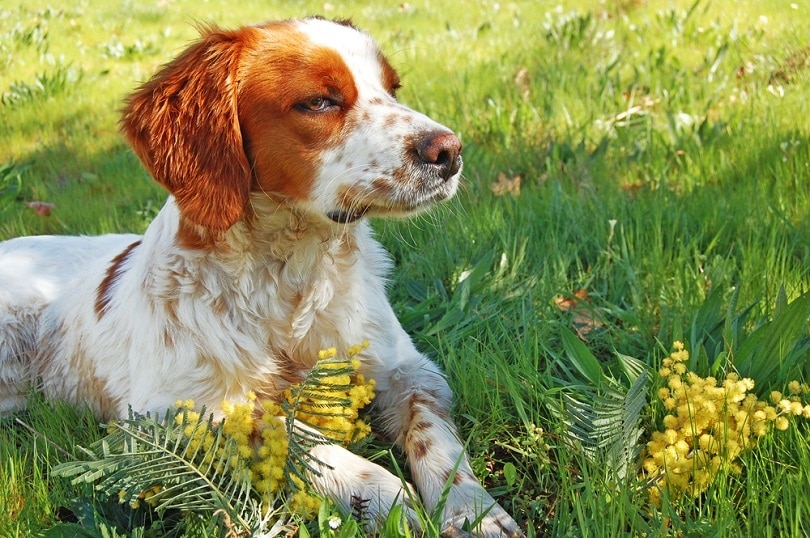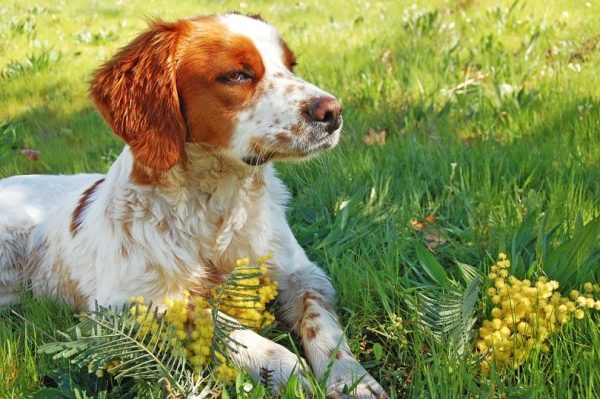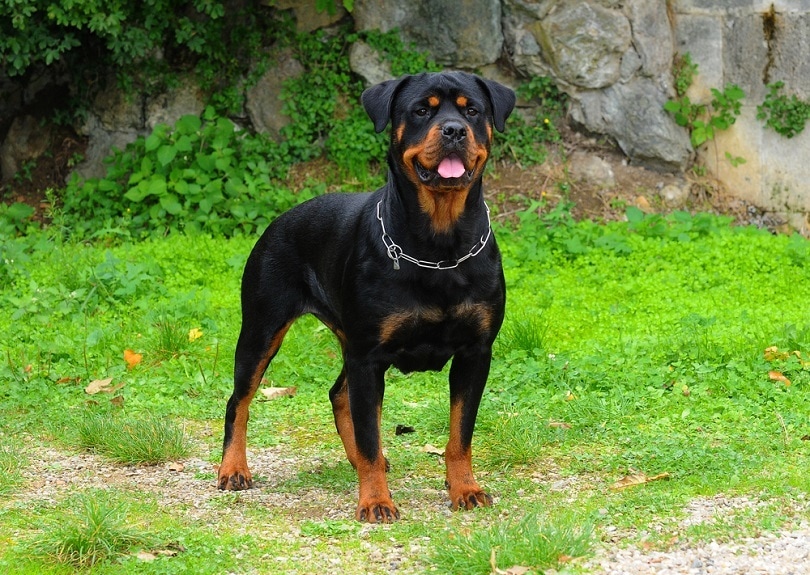Dogs are a man’s best friend, but that doesn’t mean all pooches are compatible with all people. Just like us, dogs have their own genetic makeups, temperaments, and quirks that make them better suited for some homes over others.
As we age, the amount we can handle in our doggy companions might change. If you’re looking for a more relaxed pooch to share your retired years with, we thought you might want to know which breeds to avoid. It will help you narrow your search. Let’s take a look at some potentially incompatible breeds for seniors or elderly folks.

What Makes a Breed ‘Bad’ for Seniors?
We can all agree that dogs are great, regardless of the breed. However, when it comes to ownership, things can change a bit. Some dogs are fun to visit with but not necessarily live with.
Some traits that might make bad matches for seniors include:
- Hyperactivity
- Strenuous exercise needs
- Aggressive tendencies
- Destructive tendencies
- Excessive barking
- Slow maturity
- High maintenance personalities
- Unruliness
So, what are some dogs that tend to display these traits, making them incompatible for seniors?
The 20 Worst Dogs Breeds for Seniors and Elderly
1. Husky

Huskies are large, energetic, high-strung firecrackers—and that should say enough about how they pair with seniors. If you’re looking for a relaxation buddy, this dog will never give you rest. Huskies require mental and physical stimulation every day, and if they don’t get it, bad things happen.
First, Huskies require extremely secure fencing since they can dig and jump out of almost anything. They need to be mannerly on a leash but are difficult to train. Huskies have a huge wanderlust potential—they can and will get away from their owners to go explore.
Also, they are incredibly mouthy and playful, especially as puppies. They love to chew, chew, chew. That isn’t limited to their toys, either. Huskies will chew up things you didn’t know a dog’s jaws could—they’re the goats of the dog world. This breed is just all around not suitable for the elderly.
- Mouthy
- Heavy chewers
- High energy
- Escape artists
- Stubborn to train
2. Saint Bernard

Saint Bernards holds a reputation for being big sweethearts—and this is very true. But they are also massive animals that are slow to mature. Because they just don’t recognize how big they are, they can easily knock down just about anyone.
Saint Bernards are goofy, always clowning around, but some can be somewhat aloof toward strangers. Because of this tendency, they might be harder for some older people to call off or calm down. Saint Bernards require a firm hand that can keep them in line.
Saint Bernards eat, slobber, and shed a lot. You have to be prepared to wipe strings of spit and tufts of hair off your furniture, clothes, and bed. Upkeep can be complicated and a little too much for some seniors.
However, a fully grown, mild-tempered Saint Bernard might be a suitable choice providing they have proper training.
- Aloof with strangers
- Large and clumsy
- Excessive slobbering and shedding
- Slow to mature
3. Great Dane
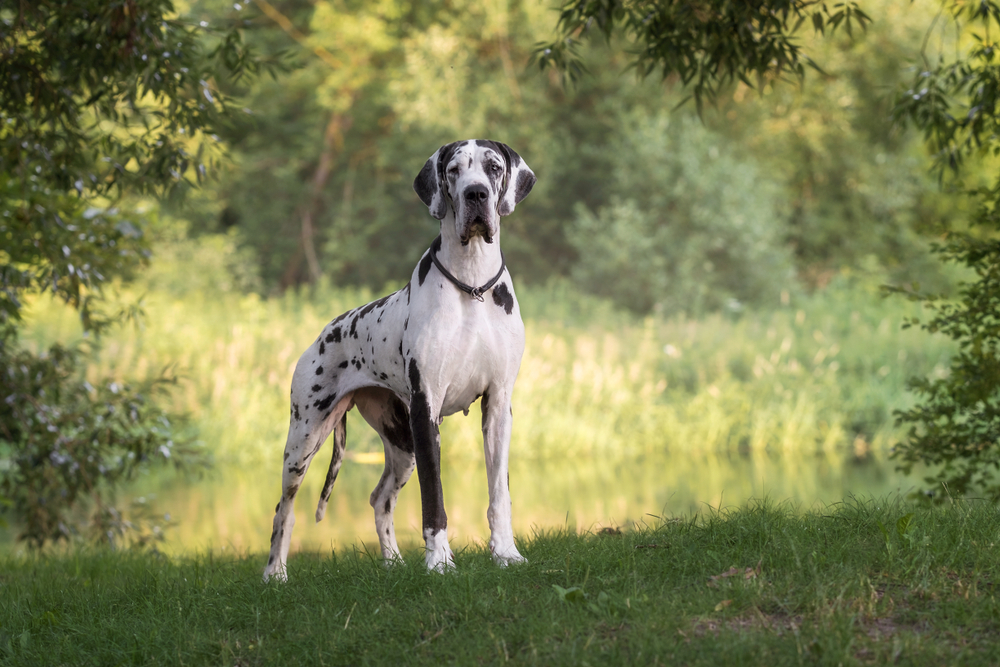
Great Danes make fantastic family pets, but they might not do so well for seniors—and it’s no fault of their own. Danes are one of the largest domesticated dog breeds alive, which means they are a bit hard to handle. Full-grown Danes reach weights of up to 200 pounds—that’s a big pooch.
Great Danes are incredibly family-friendly dogs, but they aren’t aware of just how big they are sometimes. Some Danes still think they’re lapdogs no matter how big they get, so it may be hard on the body after a while.
These large dogs might work in a situation where they are a bit older and previously trained. If you have a very calm Dane that knows how to be mannerly on the leash, it might work fine—but these are giant dogs that sometimes outweigh their owners. Rarely, Danes may exhibit aggression.
- Don’t know their size
- Can overpower owners
- Might exhibit aggression
4. Rottweiler
Rottweilers are popular for their protective instincts and powerful appearance. They can make incredible partners for people who are looking for a top-notch guard dog. However, they might not be the best choice if you’re getting up there in age.
Rottweilers are muscular and hardy, which can be hard to handle if you have any developing mobility issues. Since they can be a bit stubborn, they might be hard to train on the leash.
If they are aggressive, which is semi-prevalent in the breed, they might be hard to call off. So, if you’re looking for a protector that alerts but doesn’t act unless you signal—this isn’t the breed.
- Hard to control
- Stubborn
- Might show aggression
5. Boxer

Boxers are wonderful family dogs, but they do have boundless energy. Because of their vitality, they can be challenging for older people to deal with. Puppy years are the worst when it comes to energy. Many Boxers tend to even out over time.
However, untrained Boxers are known for pawing and jumping behavior, which can cause accidental falls. Since these dogs are large and athletically built, they can be boulders when they want to be. Their playfulness can be a lot to take in, especially if they haven’t learned to control it yet.
If you rescue an older, laidback Boxer, you might not run into these issues. But if you plan to get a Boxer from puppyhood, you might want to look for another breed.
- High energy
- Jumping and pawing behavior
- Lack of self-control as a pup
6. Australian Shepherd

Australian Shepherds are brilliant dogs that will impress anyone with their braininess. They also come in lots of exciting colors and patterns. But they might not be the best choice for an older adult.
These dogs are pretty high maintenance—they require daily grooming and tons of exercise. Aussies have long double coats that shed considerably, so you would need to prepare for lots of clean-up. They also need at least an hour of strenuous physical activity a day, which can be hard to commit to.
Aussies can take off like a bolt of lightning. Since these dogs are a herding breed, one scampering squirrel can trigger their prey drive. If they get away from you, it can be pretty dangerous for other pets and your pooch.
- Need constant stimulation
- Very high energy
- Flight risk
7. Jack Russell Terrier
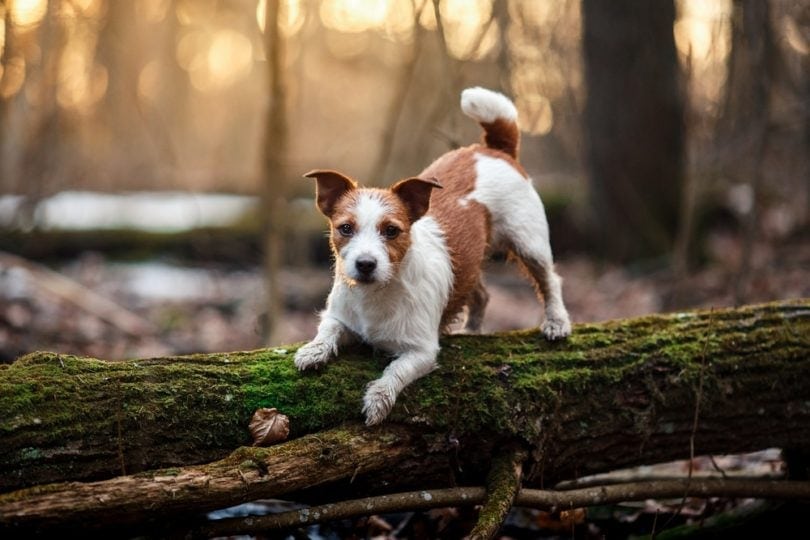
Jack Russell Terriers are peppy little dogs that are continuously on the move. They have huge personalities, always testing the limits and acting unruly. Because of their intense nature, they might be a little overwhelming for certain seniors to handle.
Jack Russells can be challenging to train—including at potty time. Without strict schedules and rigorous consistency, Jack Russells might permanently mark or use the bathroom in the house. Cleanup can be quite taxing.
Jack Russells also require a lot of exercise—and they are diggers, so be careful of unsupervised enclosure stays! They are a dog that benefits greatly from long games of catch and frisbee. They don’t like being cooped up, and their pent-up energy can come out in destructive tendencies.
- High exercise requirements
- Hard to potty train
- Destructive tendencies
8. Akita

Akitas are a powerful breed that is intense and intelligent. This dog is extremely headstrong and stubborn—and they’re usually challenging to train.
These courageous dogs can be perfect additions to some homes, but yours might not be one of them. They tend to do as they please and can bolt in a split second. They have a high prey drive, drawn to things that move quickly. If you aren’t careful on walks, you can easily get knocked down or pulled.
Akitas require a firm hand and lots of training. If you don’t have the time or energy to deal with such a high-maintenance and possibly cunning dog, pass this breed up.
- Stubborn
- High prey drive
- Requires extensive training
9. American Staffordshire Terrier
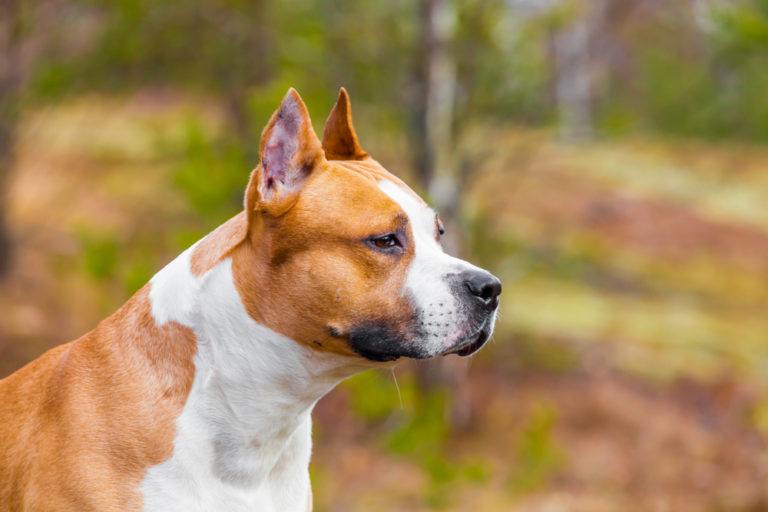
American Staffordshire Terriers are loyal dogs with amiable personalities. They are protectors that will stand by you no matter what. But unfortunately, they are goofy, muscular brutes that don’t know their size. They can bowl you over without meaning to anytime they get excited.
These dogs get large before their brains fully develop, so they stay in a puppy stage for a long time. This breed wants to play, play, play, which can be exhausting for older owners.
Plus, their powerful claws can easily tear the skin. An older, calm Staffy might work, but definitely not a puppy.
- Clumsy
- Overly playful
- Can be jumpers
10. Dalmatian
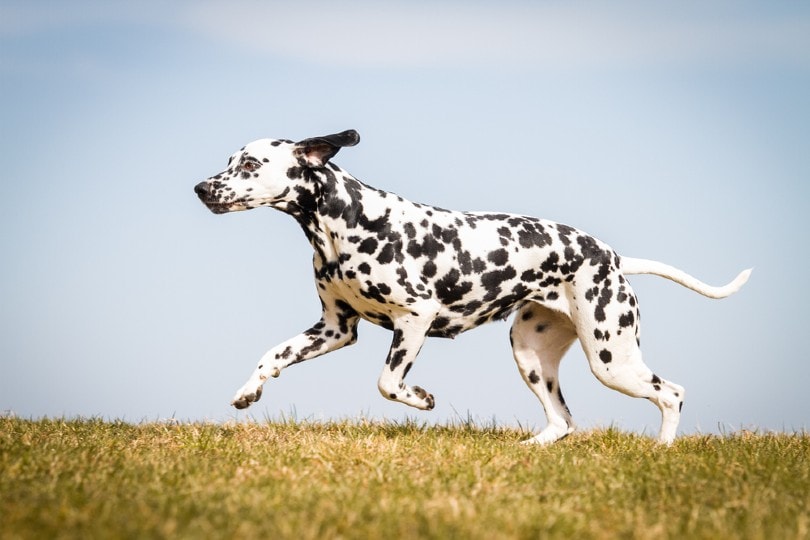
Dalmatians are charming dogs with a classically familiar coat pattern. Because of popular movies, you might think Dalmatians are loyal, laidback, and amiable. While these traits can show through, that’s not the average consensus.
Dalmatians are incredibly high energy, especially as pups. Many are also at least partially deaf, which makes getting around the house a little complicated. Their lack of hearing might also cause aggression, which won’t be positive for many owners.
If you have grandkids over to visit, this is also not a prime pick for children. Because of their deafness, they spook easily and might bite a child accidentally.
- Many are deaf
- High energy
- Possible aggression
11. Corgi
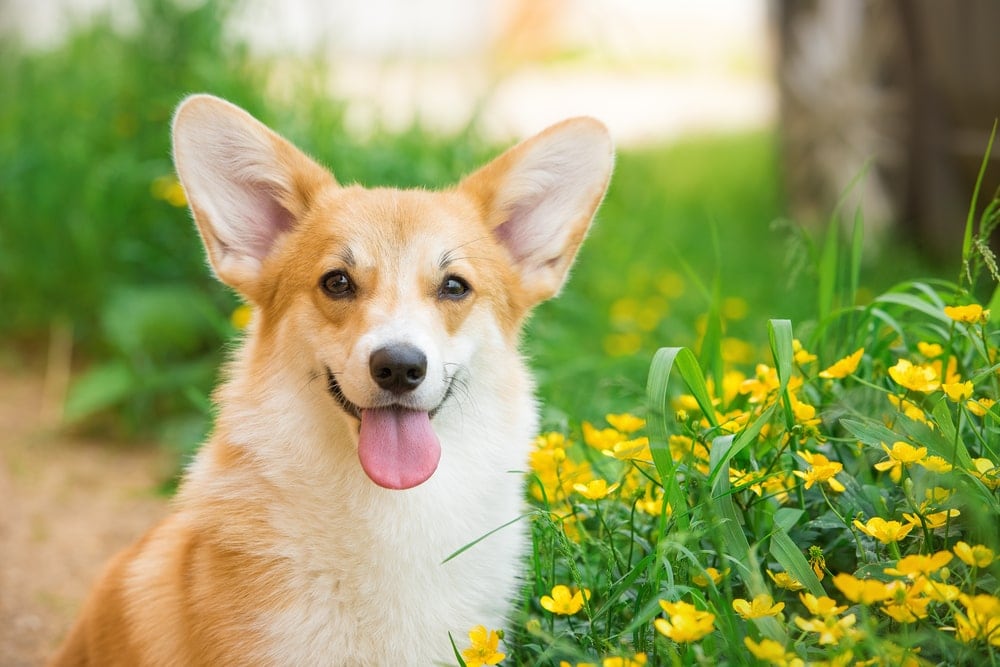
Corgis are happy-go-lucky, darling dogs with big personalities. They are charming little guys with lots of love to go around. You might see one and fall immediately in love—but not so fast.
Corgis require a lot of attention. They tend to be very hyper and puppy-like well outside of the growth window. While we appreciate their spunkiness, it might not work so well in certain environments.
If you’re looking for a compact, quiet pooch, a Corgi is definitely not in the cards for you. Corgis are very good at constant alert barking. These chipper little pups should be with people who have the patience and energy to care for them.
- Hyper
- Barky
- Slow to mature
12. Airedale Terrier
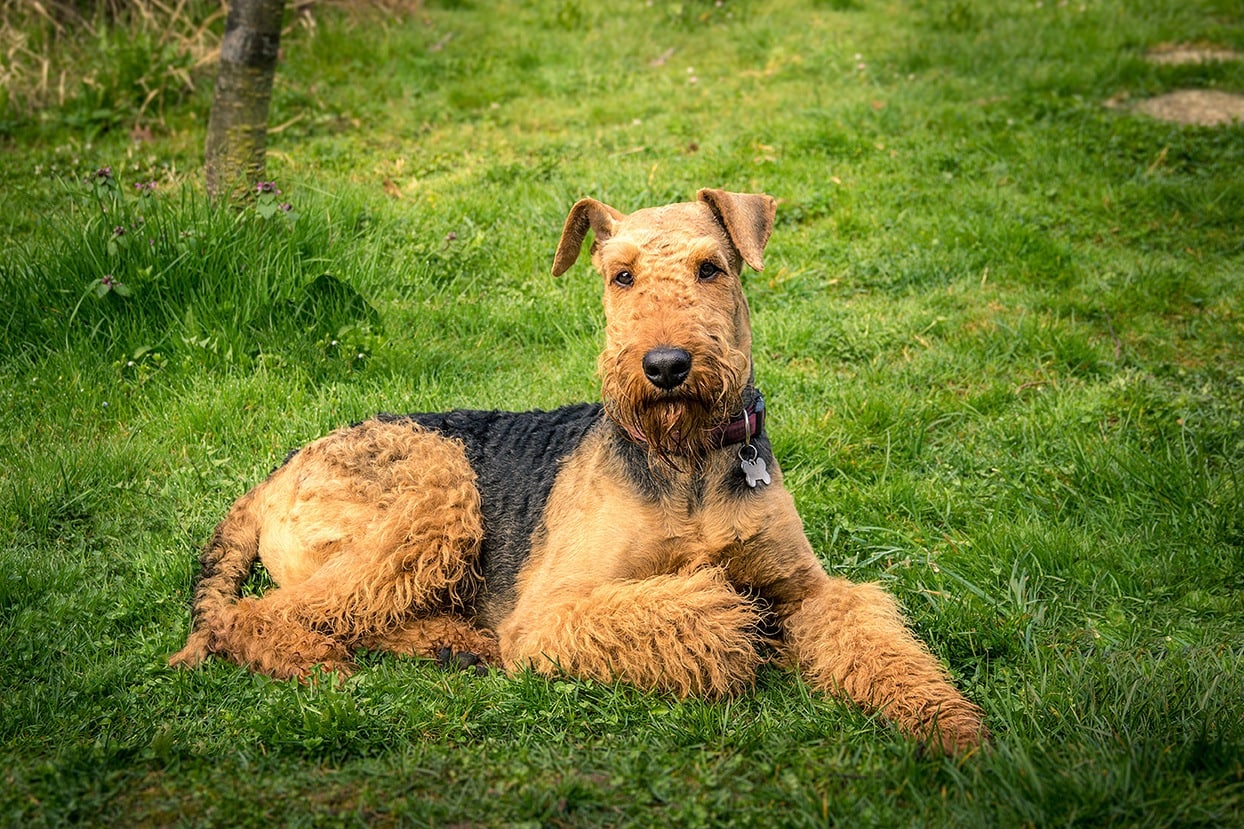
The structurally impressive Airedale Terrier is a tempting pick because of its unique appearance and charismatic character. This adventurous pup is a real breath of fresh air, having a happy-go-lucky, outgoing personality, but they might be a bad option for seniors.
These dogs are ready to party, waiting eagerly for their next walk or trip outside. Their exuberance might be tiring, especially if you just want to relax.
These dogs require a lot of attention and rely on you for stimulation and socialization. An Airedale won’t be a dog that lays at your feet while you watch TV; they want in on all the action.
- Needs constant exercise
- Needs lots of stimulation
- Not a lap dog
13. Vizsla
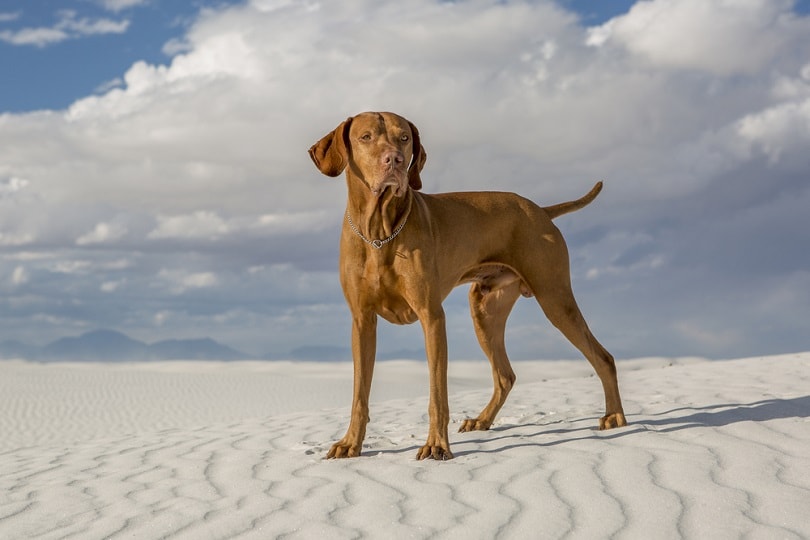
Vizslas are adorable pointers with kind eyes. This hunting breed is proficient in agility, so they love running—especially off the leash. But their exercise demands might leave you tuckered out.
These dogs’ physical requirements can be taxing for some owners, and you might not have the time to meet the daily quota. Vizslas also require lots of patience with training because they are hyper, distracted pups.
Even though Vizslas aren’t aggressive, they still might be a little hard to handle. You might want to avoid the breed due to its hyperactivity and size.
- Hard to handle
- Extreme physical needs
- Possibly hard to train
14. Brittany Spaniel

Brittany Spaniels are pros at hunting with an unrelenting prey drive, serving them well in their areas of expertise. But if you’re looking to have a mate after retirement, these dogs won’t be the lazy pooch you might desire.
Brittanys are incredibly fast, taking off with extreme speed when something catches their attention. They are master Houdinis at escaping enclosures and harnesses. If they see something they want, it’s like a switch in their brain flips, and they are in laser focus.
This breed might require a lot more running than what you’re willing to do these days—especially if you have to spend time chasing them down.
- Escape artists
- High prey drive
- Flight risks
15. German Shepherd
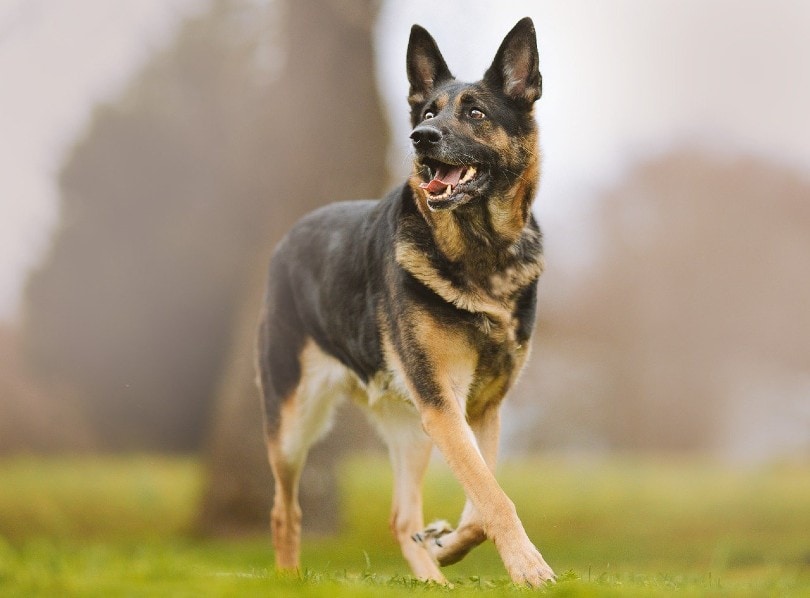
German Shepherds make tremendous guard dogs, protecting the families they are devoted to. However, German Shepherds are extremely high energy and need appropriate outlets. If you can’t keep up with vigorous exercise, Shepherds can wear you out quickly.
German Shepherds can develop nervous or destructive behaviors if they don’t get enough exercise or stimulation. They also take a while to grow into their feet, so they might knock down little ones without meaning to.
If your Shepherd shows any aggression, they have massive jaws—it could cause a lot of damage.
- Can be nervous or destructive
- Need strenuous exercise
- Large and clumsy during youth
16. Doberman Pinscher
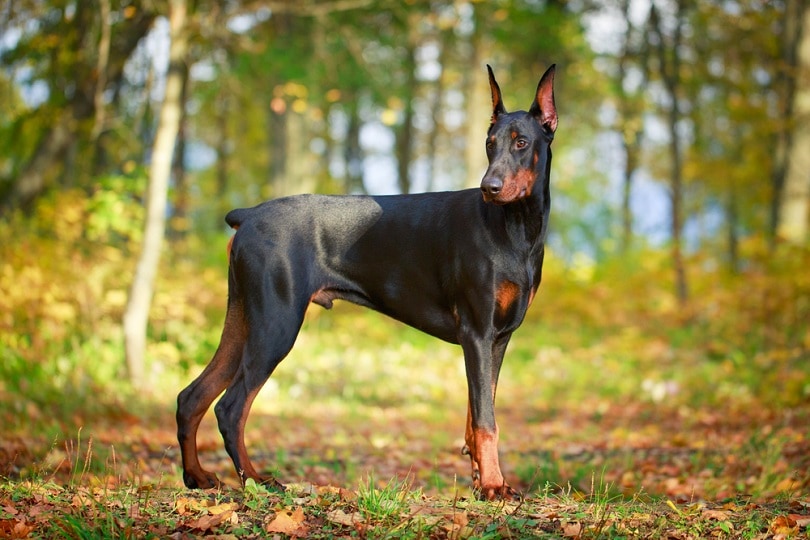
Doberman Pinschers are physically remarkable creatures with goofy, fun-loving personalities. They can make great protectors and family pets. However, they are a bit hard to deal with for some, especially in the first few years.
Dobermans take a while to grow into their feet. They can be quite clumsy and hyper when they are growing up. Dobermans reach full physical maturity at 12 months, but adolescence doesn’t stop until they’re roughly 21 months.
A growing Dobie can be quite a handful, requiring constant positive reinforcement training. The big brutes might cause unnecessary falls, too.
- Clumsy
- Requires training
- Might cause falls
17. Labrador Retriever
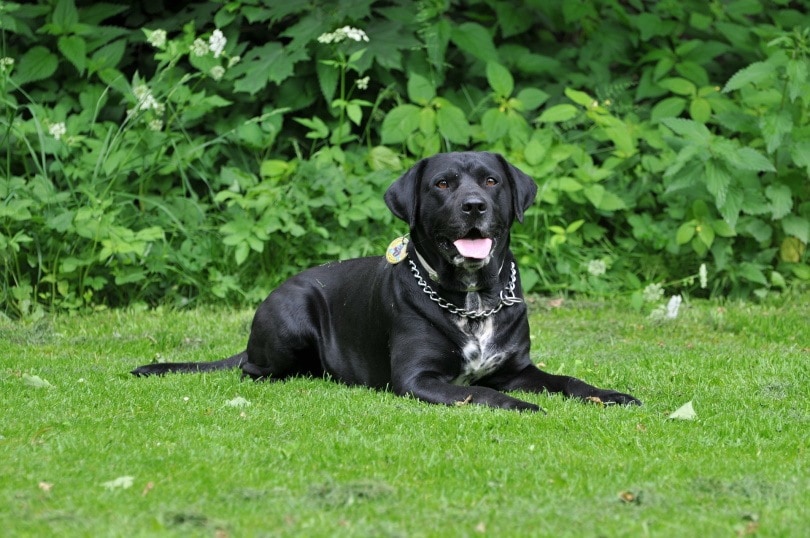
Labs are one of the most popular dogs across the world. They are friendly, outgoing, and fun to be around. But for someone who’s looking for a little relaxation at home, a Labrador might not be the best choice for you.
These dogs require plenty of exercise and have quite a high prey drive. They need long walks and time to burn off energy. If Labs get bored, they can be heavy chewers. This destructive behavior is usually only due to no energetic release.
With proper stimulation, Labs are truly fantastic pets and can even make terrific service animals. However, without adequate training, Labs are going to be a little difficult to keep up with.
- High energy
- High prey drive
- Possibly destructive
18. Maltese
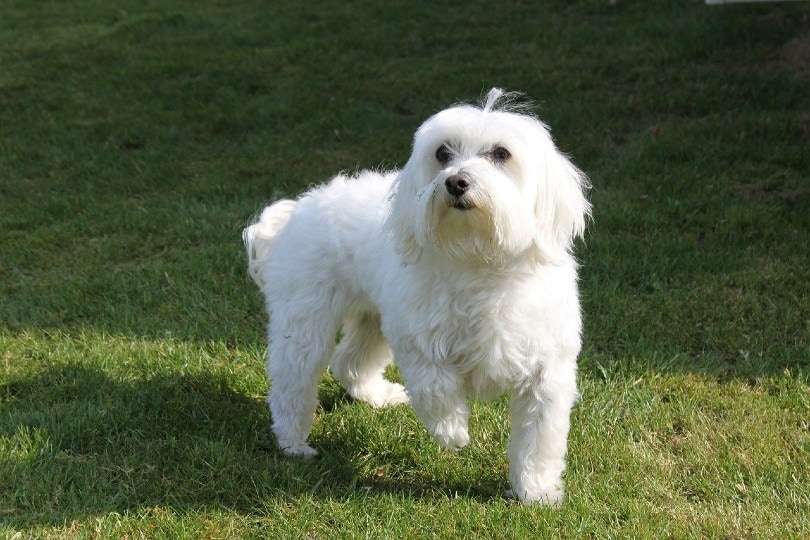
A Maltese might be absolutely adorable—tie on a few bows, and you have a flurry little princess. But this little dog is a livewire and doesn’t work well in calm situations. They also tend to be quite “yappy,” so if you live in a quiet community, it might not be so wise.
Maltese are high maintenance dogs with particular natures. They expect to be pampered—and they can be nippy if they aren’t in the mood for it. They are also extremely active, always running around the house—rarely settling. Plus, they require extensive grooming to prevent matting.
If you’re an exceptionally patient person, you might not mind the demanding personality and hyperactivity—but this breed isn’t for everyone.
- High maintenance
- Lots of grooming
- Can be nippy
19. English Bulldog
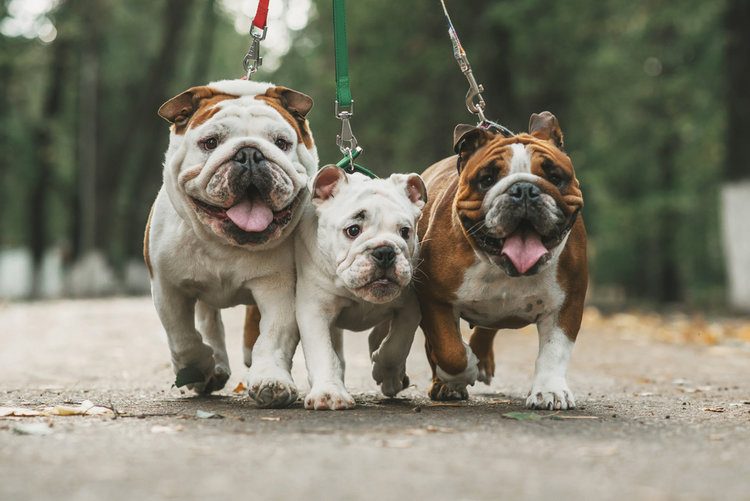
English Bulldogs are big-hearted bruisers with the best of intentions. They have super affectionate personalities and form strong bonds with families. But English Bulldogs are solid muscle, and they’re bigger than they realize.
English Bulldogs can sometimes be slow to mature, making the puppy stage last longer than some other breeds. Even after it passes, these heavy-footed dogs might stay pretty bulky and clumsy through the adult years.
Bulldogs also drool a lot and require skin fold wiping. Tending to these areas can be time-consuming. They also face more health issues than other dogs, making vet costs rise considerably.
- Heavy-footed
- Extensive cleaning care
- Many potential health issues
20. Belgian Malinois
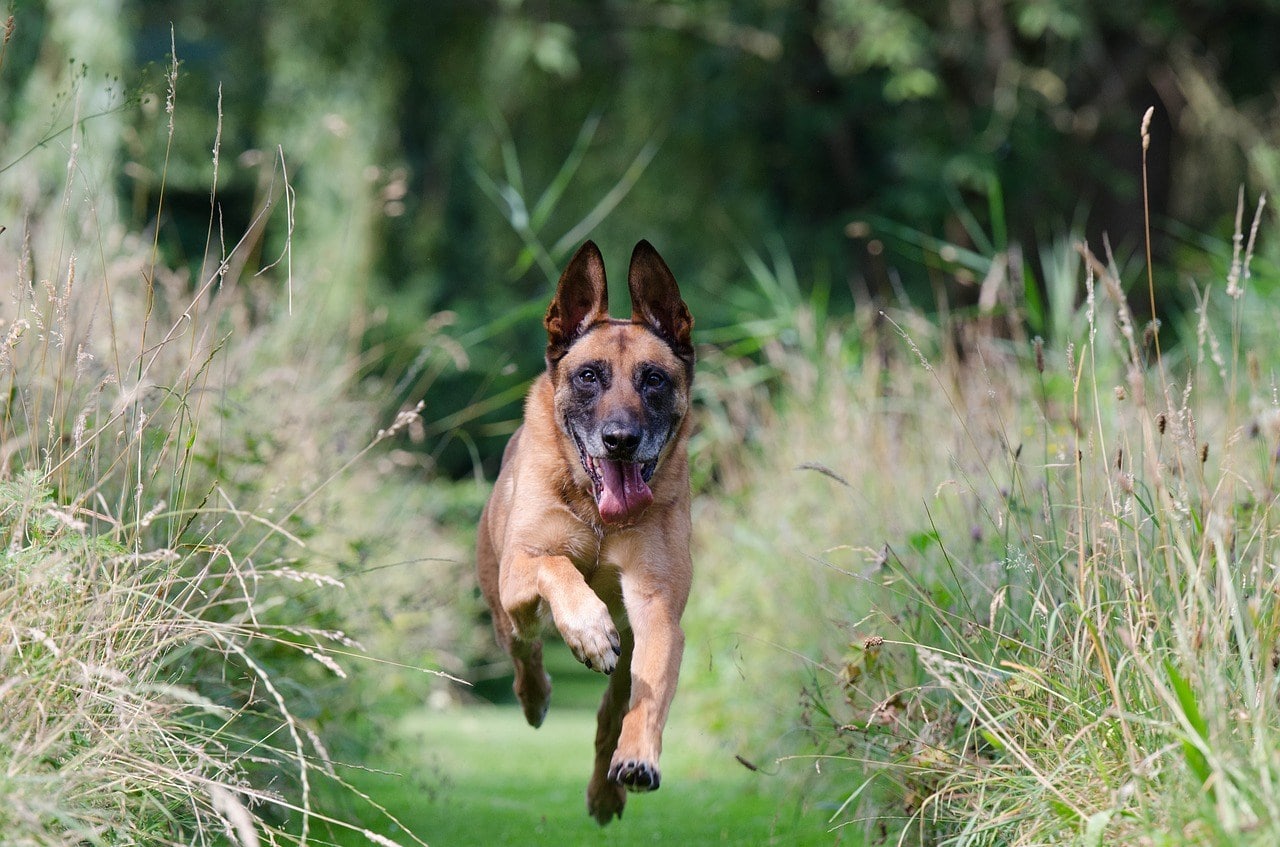
The stunningly impressive Belgian Malinois is a force to be reckoned with. They have incredible stamina and can perform outlandish tasks—winding up on task forces and rescue teams everywhere. However, when it comes to pet life, Malinois might not fare as well with seniors.
The Malinois requires extensive mental and physical stimulation for practically all their wakeful hours. If they don’t have a task, they will quickly bore and pick up bad habits. A Malinois that doesn’t get enough exercise might also develop restless or nervous behaviors that can lead to aggression.
The Malinois is just a lot. Even though they are incredible, they have quirks that make them less compatible with older adults.
- High physical demands
- Potentially destructive
- Possibly aggressive
Obedience Training
Obedience training can help many dogs become mannerly and respectful. No matter what breed you get, this service can help your dogs be the companions you need them to be.
Even with relaxed dogs, basic obedience can speed the process of mannerly behavior. You don’t have to worry about them running off on walks, barking excessively to no one, or jumping and begging.
There are many dog obedience trainers across the globe. When you welcome your new pooch home, research obedience training near you to find a suitable trainer.
Conclusion
When the years start to pass us by, you just want things to slow down—having a dog that requires extensive energy in one way or another can be exhausting. Many seniors and retirees just want to relax and enjoy their time with a furry buddy to share it with.
These are incredible breeds for unique reasons, but they just don’t match well for older adults. Are you surprised by any of the breeds that made our list?
Related Read:
Featured Image: Valentina Ponkina, Shutterstock
Contents
- What Makes a Breed ‘Bad’ for Seniors?
- The 20 Worst Dogs Breeds for Seniors and Elderly
- 1. Husky
- 2. Saint Bernard
- 3. Great Dane
- 4. Rottweiler
- 5. Boxer
- 6. Australian Shepherd
- 7. Jack Russell Terrier
- 8. Akita
- 9. American Staffordshire Terrier
- 10. Dalmatian
- 11. Corgi
- 12. Airedale Terrier
- 13. Vizsla
- 14. Brittany Spaniel
- 15. German Shepherd
- 16. Doberman Pinscher
- 17. Labrador Retriever
- 18. Maltese
- 19. English Bulldog
- 20. Belgian Malinois
- Obedience Training
- Conclusion

